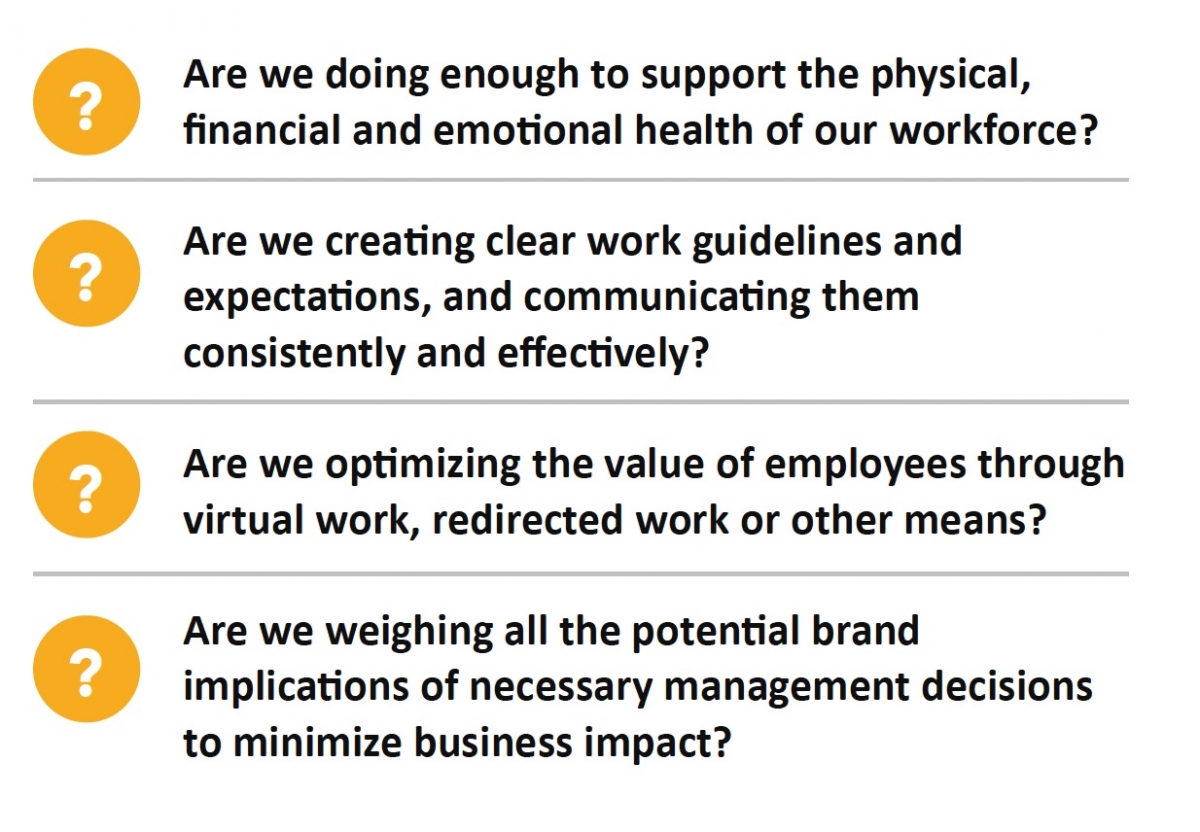The Coronavirus catapulted us head-first into the future of work. While the situation is unprecedented and incredibly challenging, there are silver linings and hints of a brighter tomorrow if we adapt the changes into a more sustainable, productive and inclusive work environment.
An increase in remote workers is one of the many changes thought leaders predicted as we moved into the 2020s, so in that regard, the future is here: 65 percent of organizations now have more than half of their employees working remotely, and 51 percent have more than three-quarters working from home, according to ongoing Brandon Hall Group research.
As social-distancing restrictions relax, will we revert to the “old normal”? Or will we build on successes and lessons learned to make work more collaborative, sustainable, and cost-effective in a digital environment?
Building a New Normal
The crisis has given us a lot to build upon. Our research and interviews with HR and business leaders in companies across the globe indicate that many organizations are pulling together and significantly changing behaviors.
As a business leader in India related, and others have confirmed, COVID-19 has created a level of inclusion and collaboration that did not exist when we were less challenged. Our opportunity is to not return to the old normal but instead build a new normal that captures the creativity and willingness to drop old paradigms and build new bridges to success.
In the initial phases of the crisis, organizations focused heavily on business continuation and helping employees stay safe, engaged, and productive as they transitioned to the remote-work environment.
Those dynamics will always be important, but leaders in many industries understand that the workforce impact of the pandemic will continue long after social-distancing regulations are relaxed. That means all phases of the employee lifecycle must be examined and adjusted. To various degrees, depending on organization size, employers are prioritizing the hiring process, performance and skills development, and workforce planning.
Since the pandemic altered—perhaps permanently—the definition of “workplace,” then the strategies, processes, and technologies associated with new reality must change. It’s important to examine how you have addressed the immediate challenges posed by COVID-19. From that foundation, you can move on to longer-term priorities.
Core Questions About Remote Work During Social Distancing
Based on Brandon Hall Group’s quantitative and qualitative research, here are questions that get at the foundation ofpreparing for the future of work:

From the research data and subsequent interviews, here are steps progressive organizations have taken to establish a solid foundation for ongoing change for employees who are likely to be more dispersed than they were before the pandemic:
- Everyone is stressed and that may remain for quite some time. Leading organizations dedicated a team of people to help employees. While the worst may be over, it’s important to dedicate needed resources to help employees cope because their sense of well-being will affect their ongoing level of engagement and productivity.
- Many organizations quickly created online guides or short tutorials for remote workers on topics such as how to use online conferencing tools, how to manage your time while juggling responsibilities at home, coping with isolation, etc. This provides leadership and demonstrates empathy. Since there will be more change in transitioning to whatever the new normal will be, it’s important to update guidance as needed.
- It’s not enough to simply communicate “more.” You must have a multifaceted communication strategy, including messaging apps such as Slack or Teams, videoconferencing, texting, and standards such as e-mails or company intranet portals. We talked to many organizations that upped their game in this realm, and while future change may not be quite as intense, ongoing communication remains vital.
Solicit Ideas and Welcome Feedback
Brandon Hall Group research shows a critical driver of employee engagement is making sure employees’ voices are heard. Especially in this environment, soliciting and acting on employee ideas is important.
Create Accountability
Part of helping employees adjust to a new work environment is establishing expectations for productivity and work performance. This is important but tricky; you want to provide guidance without sending the message that you don’t trust your employees. The best approach is to set performance expectations while providing employees flexibility in meeting them.
Ensure Security and Privacy for Remote Workers
During the pandemic, close to three-quarters of organizations shifted a large percentage of their workforce to remote work. In the early going, less than 30 percent of businesses had IT working on securing company data and devices. Data security must be ubiquitous with remote work.
Facilitate Collaboration
Use videoconferencing and social collaboration tools to keep people working together and staying connected. Employees should have the freedom to meet outside of official virtual team meetings. In those official meetings, determine when/if Webcams are required to be on or whether it is optional. Employees can be sensitive about their work environment or appearance.
Discuss Work/Life Integration
In the words of one HR leader, “working from home for the first time is like having a newborn—your schedule is unpredictable.” New remote workers need advice and guidance just like new parents do. Even as employees acclimate to remote work, ongoing discussion and support will be important as the new reality evolves.
Create Schedules for Check-Ins
In an office environment, there are many opportunities for spontaneous interaction. With remote workers, those opportunities are naturally not there, so you should be deliberate in creating chances to check in with your employees, even for small matters. Our research shows that most managers struggled to check in regularly and focus on feedback, coaching, and development before the pandemic. As we move past the crisis, it’s important to continue to create frequent and meaningful connections with each team member.
Continued Social Meetings
In the absence of the proverbial water cooler where colleagues gather socially, many organizations created regular online events with their teams that have nothing to do with day-to-day work. We’ve talked to many organizations that improved connections with their teams this way, and this is a good practice to continue for remote workers.
To download a complimentary copy of Brandon Hall Group’s Managing Remotely During Disruption Playbook- Research and Guidance for COVID-19 and Beyond, click here.
Claude Werder is senior vice president of Research Operations and principal Human Capital Management (HCM) analyst at Brandon Hall Group. The firm’s vision is to inspire a better workplace experience, and its mission is to empower excellence in organizations around the world through its research and tools. Brandon Hall Group has five HCM practices and produces the Brandon Hall Group HCM Excellence Awards and the annual HCM Excellence Conference, in West Palm Beach, FL.




